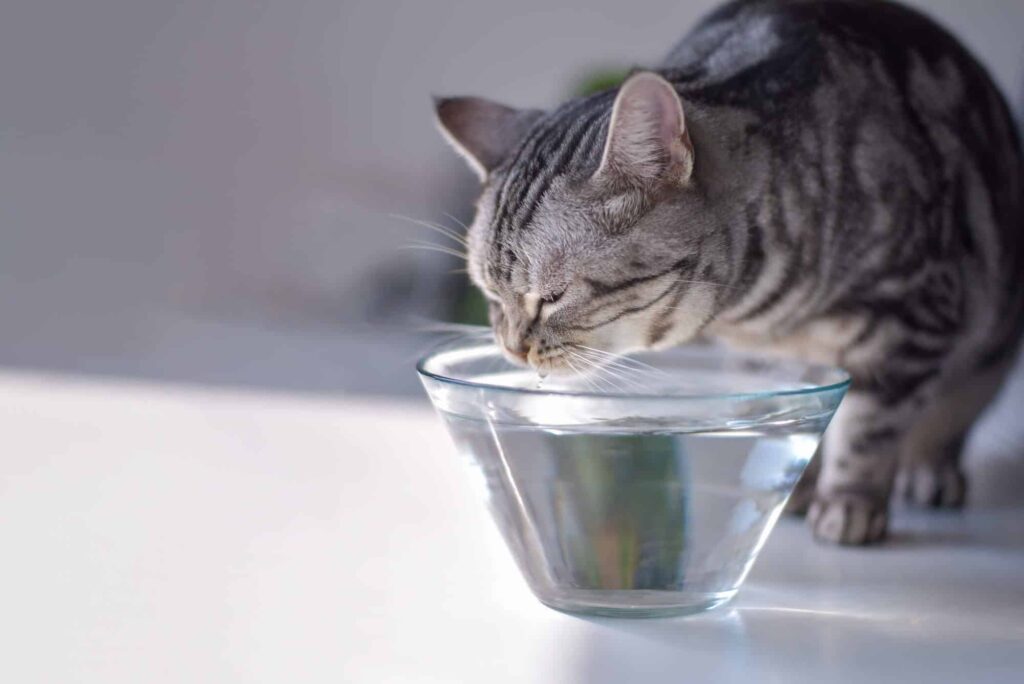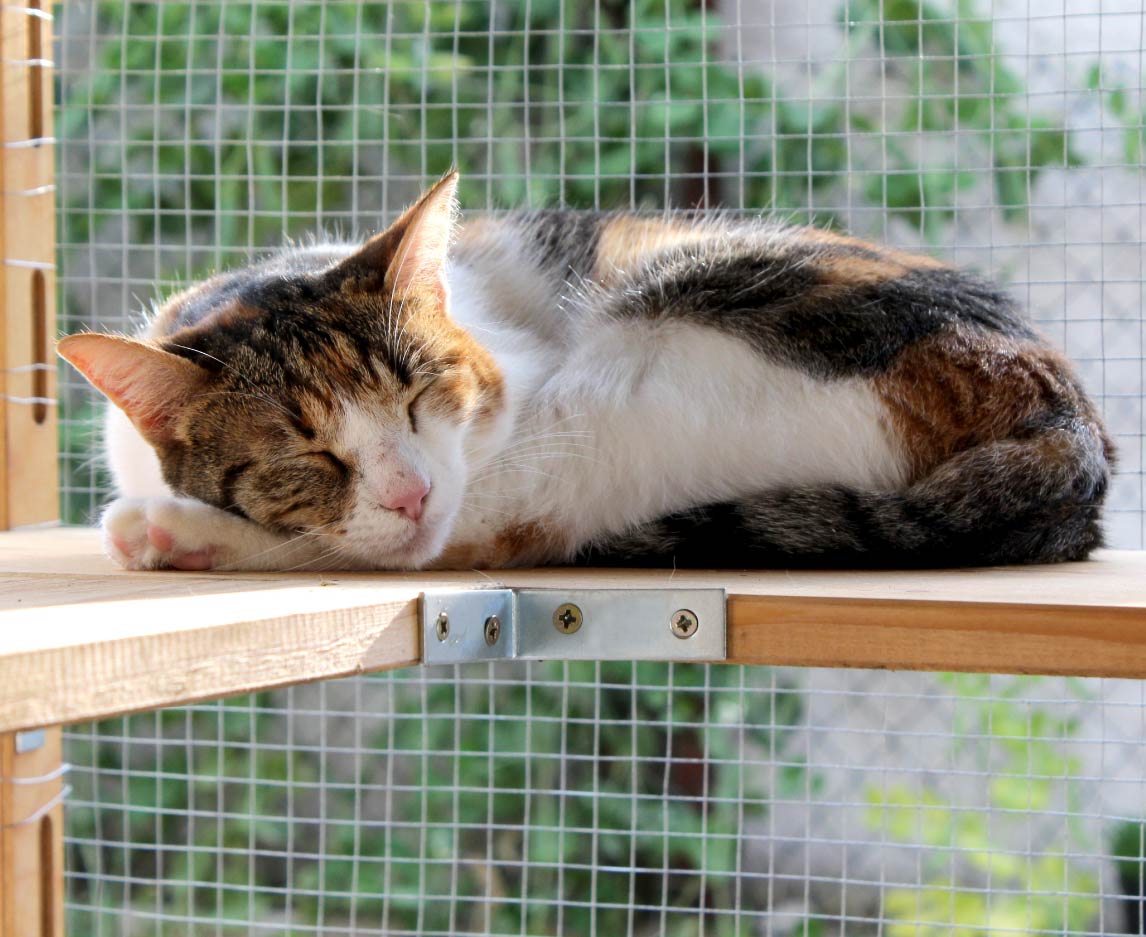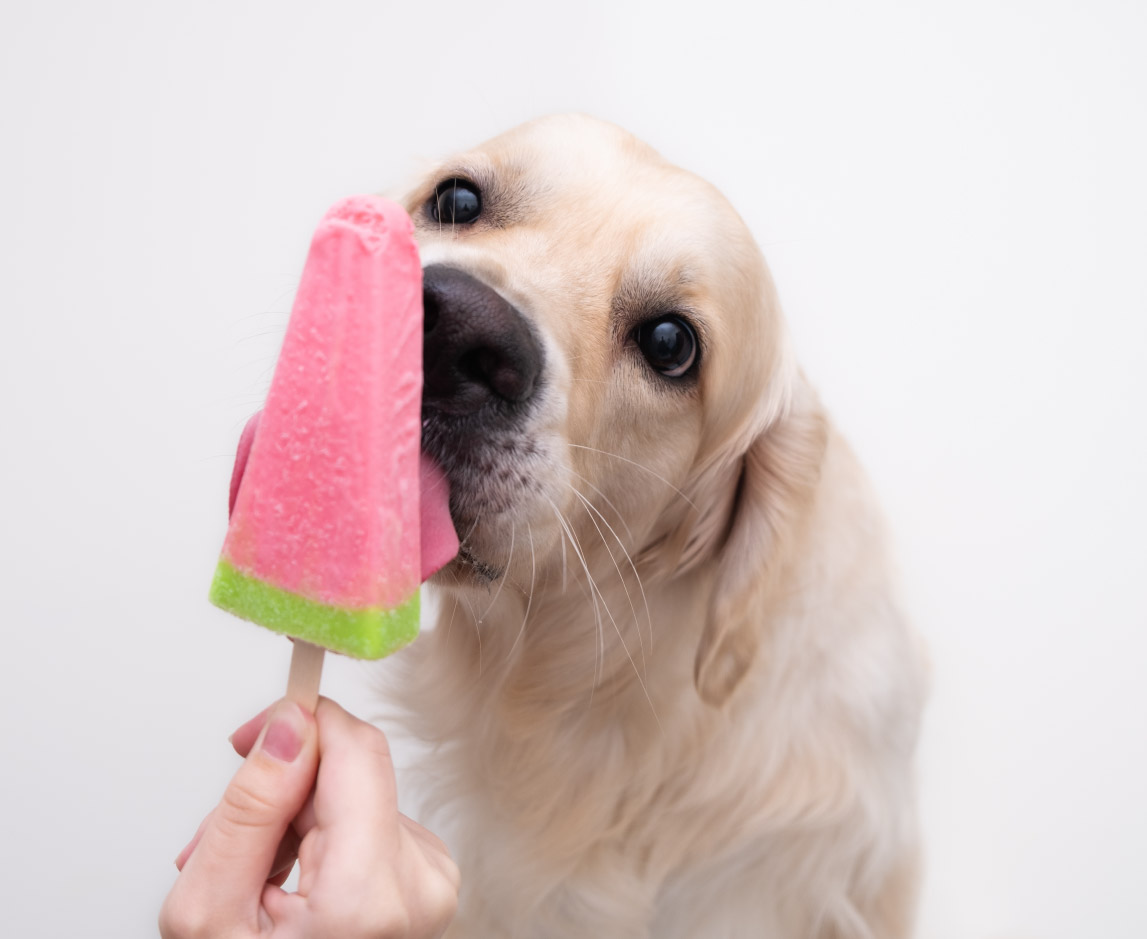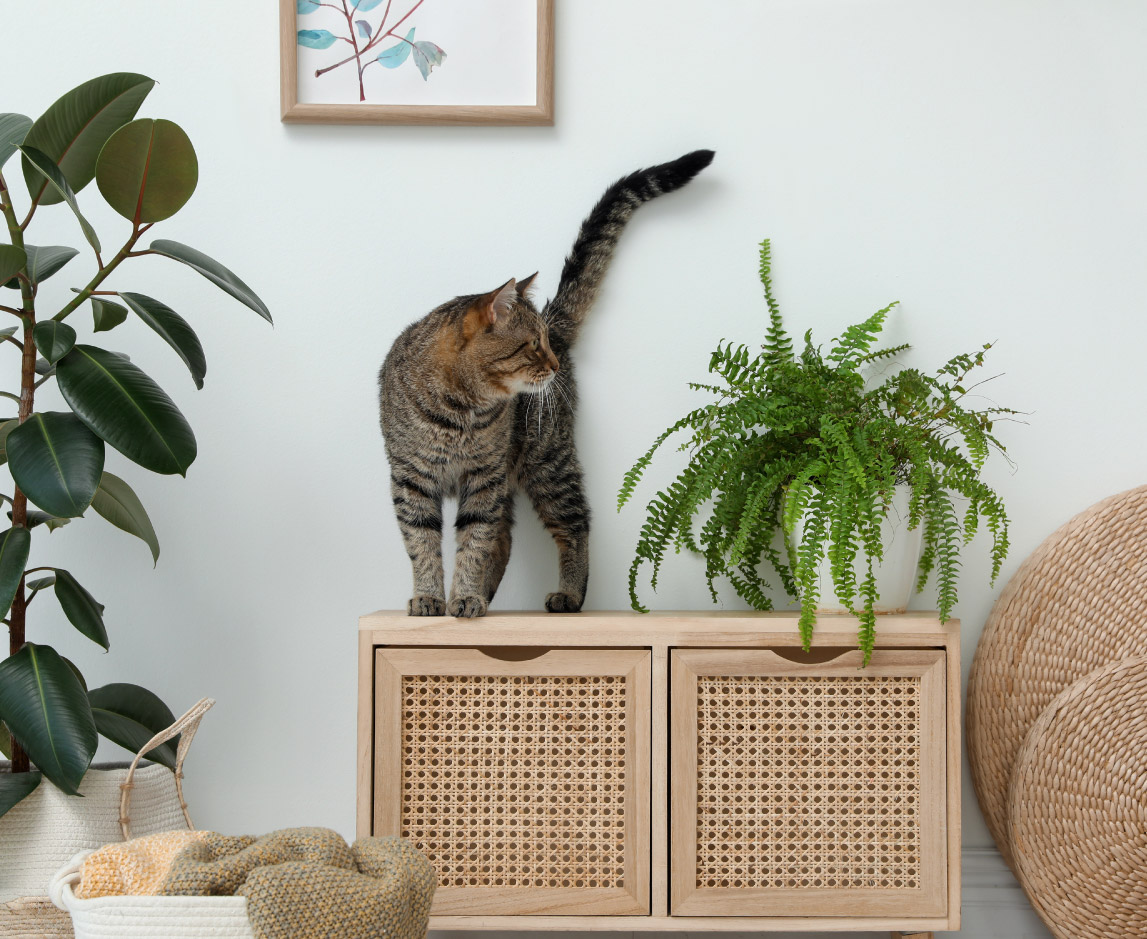The modern house cat may be descended from desert-dwelling felines and have inherited some of their ancestors’ ability to go long stretches of time without water, but that doesn’t mean they’re immune to the effects of dehydration.
Dehydration — a condition which occurs when the body uses or loses more water than it takes in — can pose serious risks to cats, including an inability to regulate body temperature, weakness and confusion, irregular heart rate and organ failure. If left untreated, dehydration in cats can be fatal.
In this blog post, we’ll look at common signs of dehydration in cats, so you help your feline friends stay happy and hydrated.
What Causes Dehydration in Cats?
Dehydration is caused by insufficient fluid intake, which can be brought on by a number of factors, including:
- Lack of access to water: Like humans, cats require access to clean, fresh water; without it, they’re at risk of dehydration. Emphasis on “clean” and “fresh” — stagnant water can harbor bacteria, which could lead to other health conditions or put cats off drinking entirely.
- Hot weather or dry air: When combined with a lack of access to water, hot weather and dry air can cause cats to become dehydrated, and even lead to heatstroke. Contrary to popular belief, cats can and do sweat — they just do so through their paw pads. It’s important to replenish any fluids your cat loses on a hot day to prevent dehydration.
- Chronic kidney disease: Cats with chronic kidney disease (CKD) may be more prone to dehydration because CKD can cause an electrolyte imbalance and impair fluid reabsorption. It’s especially important to monitor water intake for cats with CKD because dehydration can lead to further kidney damage.
- Diabetes: One of the leading symptoms of feline diabetes is excess glucose in the bloodstream, which can prevent a cat’s kidneys from retaining water. As a result, cats may experience increased urination, rapidly depleting fluids in their body and increasing their risk of dehydration.
- Fever: When cats feel feverish, they tend to pant and perspire as they attempt to regulate their body temperature, increasing their fluid loss. Fevers can also impact a cat’s appetite, causing them to eat or drink less. Taken as a whole, these factors can lead to increased risk of cat dehydration.
- Vomiting: From coughing up a hairball or eating their food too quickly to ingesting a toxic substance or suffering from a gastrointestinal disorder, there are a wide variety of reasons why your cat might vomit — all of which can lead to them losing fluids and becoming dehydrated.
- Diarrhea: Much like vomiting, diarrhea can cause cats to lose vital fluids rapidly, leading to dehydration.
- Hyperthyroidism: Feline hyperthyroidism is characterized by the excess production of thyroid hormones, which can accelerate a cat’s metabolic rate. The increased metabolism can lead to elevated heat production and increased water loss through evaporation, as a cat may sweat more or pant more frequently to cool off. As a result, it’s especially important to ensure that cats diagnosed with hyperthyroidism drink additional fluids to prevent dehydration.
- Dental conditions: Dental problems such as gingivitis or periodontitis can make it uncomfortable for cats to chew or swallow, which can cause them to avoid eating or drinking and reduce their fluid intake.
- Medications: Certain medications — especially diuretics, which are intended to increase urination and are commonly prescribed to cats with high blood pressure, congestive heart failure and kidney disease — can increase your cat’s risk of becoming dehydrated.
How Much Water Does My Cat Need?
According to the Cornell Feline Health Center, cats need to consume 4 oz. of water for every 5 lbs. of lean body weight per day. Based on that guidance, a 10 lbs. cat would need to drink about one cup of water per day.
With that said, the exact amount of water you should give your cat on a daily basis will vary depending on certain conditions, including your cat’s weight, the type of food you give them and where your home is located. For example, a cat that eats an all wet food diet may need to drink less water than a cat that is regularly fed dry food, and a cat that lives somewhere sunny and hot will likely need more water than one living in a cooler climate.
Much like humans, it is possible for cats to drink too much water, so it’s best to consult your veterinarian to determine how much water your cat should consume on a daily basis.
How to Tell If a Cat Is Dehydrated
Some of the most common signs and symptoms of dehydration in cats include:
- Lethargy: While lethargy on its own isn’t necessarily a sign of dehydration, a dehydrated cat is more likely to feel weak or tired than one that’s sufficiently hydrated.
- Poor appetite: Dehydration in cats is often accompanied by a loss of appetite. If your cat seems disinterested in their usual food, it could be a sign of a more serious issue.
- Dry, brittle fur: A well-hydrated cat’s fur should be thick and soft with a healthy luster. If your cat’s coat is unusually dry or thin, or your cat is shedding excessively, it could be a sign that they’re dehydrated.
- Loss of skin elasticity: Good hydration creates an optimal balance in skin’s water content, supporting collagen and elastin fiber structure. For this reason, loss of skin elasticity is one of the leading indicators of dehydration in cats. If you suspect that your cat is dehydrated, you can check their skin elasticity by gently pinching the skin between their shoulder blades. If the skin remains “tented” — that is, it continues to stand up rather than bounce back normally — it could be a symptom of dehydration.
- Dry mucous membranes: Dehydration can cause your cat’s gums, nose and nasal passages to dry out due to insufficient moisture. If you think your cat may be dehydrated, gently lift their lip and look at their gums — if they’re dry and tacky to the touch, your cat could be dehydrated.
- Pale tongue and/or gums: Dehydration can lead to low blood pressure and poor circulation, reducing the flow of oxygenated blood to your cat’s gums. This can cause their gums and even their tongue to appear pale in color.
- Sunken eyes: In the most severe cases, a dehydrated cat’s eyes will appear sunken in. If your cat displays this symptom, or you find a cat in this condition, bring it to your vet immediately.
Kittens, senior cats and cats with conditions such as diabetes and hyperthyroidism are at a greater risk of dehydration and should, therefore, be monitored more closely than a healthy, adult cat.
What to Do If Your Cat Is Dehydrated
If your cat displays dehydration symptoms, contact your veterinarian immediately; they’ll be able to gauge the severity of your cat’s dehydration, identify the underlying cause and recommend the appropriate treatment. Some of the most common treatment plans for dehydration in cats include fluids at home (for mild cases) and subcutaneous or intravenous fluids at your veterinary clinic (for more severe cases).
How to Prevent Your Cat from Becoming Dehydrated
To help your cat stay healthy and hydrated:
- Give them access to fresh, clean water: You can encourage your cat to increase their water intake by setting out multiple bowls of water around your home. Just be sure to place them away from litter boxes or food dishes to reduce the risk of cross-contamination and wash and refill them daily to prevent bacteria from forming.
- Make hydration interesting: Cats can be finicky and sometimes need a little extra motivation to stay hydrated. Some respond well to automated fountains, which mimic the sound and sensation of running water, while others like to drink directly from the faucet. Adding an ice cube to your cat’s bowl can also entice them to drink, as well as keep their water cool on a hot day. Finally, for cats that are super particular, flavoring their water with a little low-sodium chicken broth or water from a tuna can encourage them to drink more water.
- Add wet food to their diet: Canned wet food has a substantially higher water content than dry food, so adding wet food — such as RAWZ paté or shreds — to your cat’s diet is an easy and delicious to help them stay hydrated.
You can find RAWZ at your local independent pet food retailer — visit our “Where to Buy” page today to find a store near you.
FAQs
Q: What risks does dehydration post to cats?
A: Dehydrations poses many risks to cats, including:
- Lethargy and weakness
- Electrolyte imbalance
- Kidney damage
- Urinary tract issues
- Digestive issues
- Reduced immune function
- Heat stroke
- Organ failure
Severe cases of dehydration in cats can be fatal, so it’s important to be able to recognize the signs of dehydration early on.
Q: What should I do if my cat won’t drink water?
A: Even the most easy going cat may be reluctant to drink water, especially if they aren’t feeling well. You can entice your cat to drink to drink more water by:
- Leaving out multiple bowls of fresh, clean water around your home
- Investing in an automated fountain or letting them drink from the faucet
- Adding an ice cube to their water bowl(s), especially on a hot day
- Adding a little low-sodium chicken broth or water from a tuna can to their water bowl
If, after attempting all of these tricks, your cat still won’t drink water, it may be time to call your veterinarian, as a lack of appetite or thirst could lead to dehydration or point to more severe health conditions.
Q: How can I tell if my cat is dehydrated?
A: Although there are a few ways to determine whether your cat is dehydrated, the easiest ways to tell are by doing a “pinch test” and by checking their gums. To do a “pinch test,” gently pinch the skin between your cat’s shoulder blades. If it remains tented rather than going back down as normal, that indicates a loss of skin elasticity and, potentially, dehydration. If your cat’s gums are pale or dry and tacky to the touch, that is also a strong sign that your cat is likely dehydrated.
Q: How long does it take a cat to recover from dehydration?
A: It can take anywhere from hours to days for your cat to recover from dehydration, depending on the severity of their case.
Q: Can eating wet food prevent cats from becoming dehydrated?
A: Most canned wet foods have a high water content, which makes them a good source of hydration for cats. With that said, although feeding your cat wet food — either in addition to or in place of dry food — can help them stay hydrated, it isn’t a substitute for drinking water.






